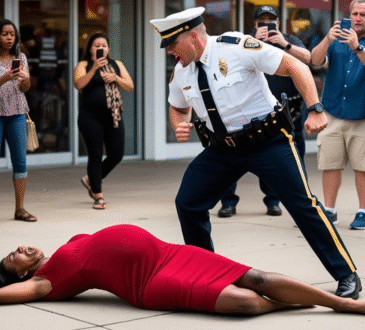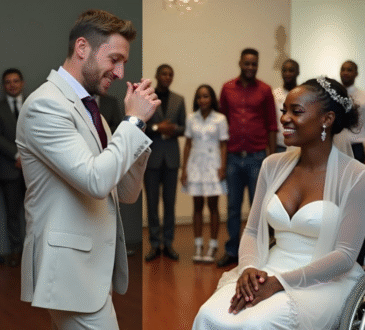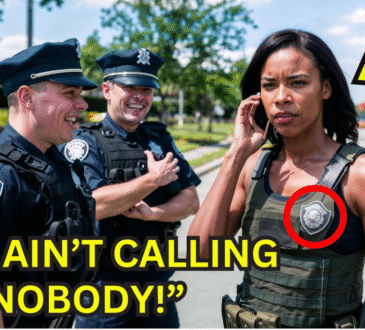17 Years Old Slept in His Friend’s House Then He Woke Up to Find Out the Shock of His Life
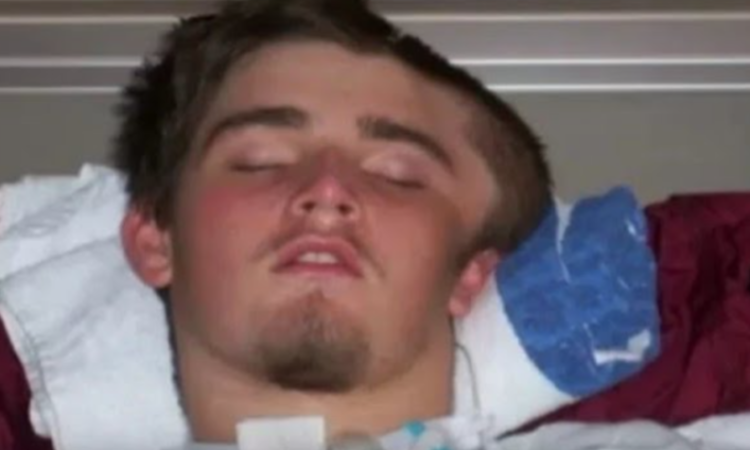
Cody Dietz was like any other teenager from York, Pennsylvania. At 17, he liked hanging out with friends and having sleepovers. Life was pretty normal until one night, something changed everything.
His mom, Bonnie, wanted to know when Cody would be home. She called him on his phone, but he didn’t answer. As time went by and Cody still didn’t call back, Bonnie got more worried. She kept calling him, but he never picked up. Bonnie started feeling really scared, wondering what could have happened to her son.
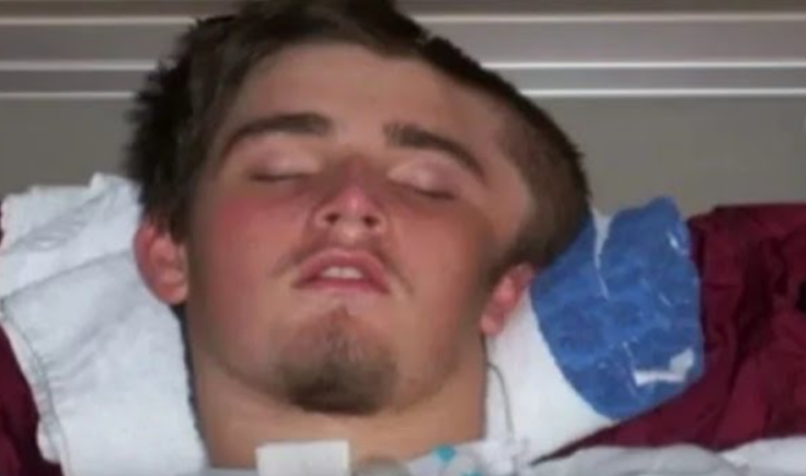
More about Cody’s story is available in the video. Cody’s father’s phone eventually rang, but it wasn’t Cody calling. Instead, it was one of Cody’s friends. They told Cody’s father that Cody couldn’t stand and was talking in a way that couldn’t be understood. When Cody’s father held the phone to Cody’s mouth, all he heard were strange gurgling sounds.
Realizing something was seriously wrong, Cody’s parents called for an ambulance right away. When the paramedics arrived, they thought Cody might have had a stroke, but they later found out they were wrong. Cody was airlifted to the nearest hospital in a rescue helicopter. It was there that their worst fears were confirmed.
The hospital’s neurologist, Dr. Ray Reischwein, was really worried about Cody. He said, “It’s really important to diagnose the problem quickly. The treatments work best if they’re done within six hours.” But Cody didn’t get diagnosed until about 12 hours later.
Cody was in bad shape. Doctors did an MRI scan and found out he had a stroke on the left side of his brain. Because it took so long for Cody to get to the hospital, his chances of surviving were only 20%. Doctors had to do a tough surgery where they took off the top part of his skull to ease the pressure on his brain. They also cooled down Cody’s body to about 33 degrees Celsius or 91 degrees Fahrenheit. This cooling process is often used for patients having open heart or brain surgery. It helps to use less oxygen in the brain, which stops brain cells from dying.
Cody stayed in a coma for three weeks after the surgery. His parents were really worried about him during this time. Bonnie, Cody’s mom, stayed by his side, trying to stay hopeful. She remembered that a week before Cody had the stroke, he was acting strange. He talked slowly and his words were mixed up. His arms and legs kept moving uncontrollably while they talked. Now they knew why.
When Cody woke up from the coma, doctors could see how much the stroke had hurt him. The right side of his body didn’t work anymore, and he couldn’t talk or write. Doctors told the family that Cody would need a lot of time to get better, but he might never be completely the same again.
After a few weeks, Cody surprised everyone by starting to talk again. After two years of tough therapy, he was back to being as fit as before. Because of what he went through, Cody decided to help other teens and parents learn about the signs of a stroke. “I wish I had gone to the doctor sooner, but you never know what might have happened,” Cody said.
His mom, Bonnie, has also been working hard to make people aware of the dangers and signs to look out for. These signs include feeling dizzy, face muscles not working right, talking funny, and vision problems. “Parents should pay attention to any signs their child might have,” Bonnie warned. “The problem with strokes is that they’re hard to notice. Some people think only old people get strokes and ignore the signs in younger people.”
Sadly, doctors have noticed more young people getting strokes. They think it’s because more people are living unhealthy lives. Many teens smoke, drink, and do drugs, thinking nothing bad will happen to them. But sadly, they find out the hard way that they’re not invincible.
Raising awareness among young people and their parents about the dangers of strokes and knowing how to recognize the signs and symptoms is crucial. Strokes can happen at any age, so it’s important to be aware.
When Cody Dietz didn’t wake up the morning after a party, his friends thought he was just hungover and let him sleep. They didn’t know that their 17-year-old friend had actually had a stroke, which could have been deadly. Then, one of his friend’s dads called me and said, “Your son seems really out of it. Should I call 9-1-1?” Cody’s mom, Bonnie Dietz, remembered what happened on July 30th, 2008, when Cody passed away. She explained that the boys had been drinking at another place the night before and then went to his friend’s house.
A CAT scan done at York Hospital’s emergency room showed that her son had a big stroke on the left side of his brain. He was taken to Penn State Milton S. Hershey Medical Center by a Life Lion helicopter. Neurologist Dr. Ray Reichwein had to make quick decisions for Cody. “We need to diagnose this within a certain time. Many treatments work best if given within six hours. Cody’s diagnosis was delayed by about 12 hours,” said Reichwein. Because of the delay, some treatments couldn’t be given.
Cody’s friend not knowing about strokes in teenagers is common. Most adults, and even teenagers, don’t know that a teenager can have a stroke, doctors say. According to the National Center for Health Statistics, stroke is one of the top 10 causes of death among children, and the number of children dying from it is going up.
Reichwein, who leads Hershey’s Stroke Program, noted that in recent years, common risk factors like obesity, high blood pressure, high cholesterol, type 2 diabetes, smoking, and a more inactive lifestyle have become more common among children. These factors greatly increase the chances of having a stroke. To worsen matters, most teenagers don’t know about their risk factors. They’re also unaware that certain choices, such as smoking, drinking alcohol, using marijuana, or taking birth control pills, can make the risk even higher, according to Kathy Morrison, who oversees Hershey’s Stroke Program.
“Many teenagers don’t know about their risk factors,” she explained. “Because teenagers think they’re invincible and believe that strokes are mostly a problem for older people, teenage stroke isn’t something they even think about,” Morrison added, who runs Hershey’s School Age Stroke Awareness Program.
When kids hear Cody’s story, they’re shocked, she says. “It’s hard to find a more dramatic example.” Cody had severe swelling in his brain, and there was no space for it to go. Without more treatment, his type of stroke has an 80% chance of death, and his was probably close to 100%, said Reichwein. He removed part of Cody’s skull and put a lining over his brain’s surface to reduce swelling.
Afterward, Cody underwent therapeutic hypothermia, where his body was cooled to 33 degrees to help save injured brain cells and reduce swelling. After a few days, the swelling had gone down a bit. Despite this, his mom said, “We weren’t sure if he would survive another three weeks. We had a lot of people praying for him. I believe his being here is all thanks to God’s grace.”
Following the stroke on his left brain side, Reichwein explained that Cody’s speech and understanding were affected, as well as his ability to use his right side and dominant hand. “Considering the extent of his brain injuries, we have a really positive outcome. It’s almost like a miracle,” he said. Reichwein noted that other young people in their 20s and 30s who were on birth control pills are among the young stroke victims seen by Robin Petras, executive and program director at the Central Pennsylvania Aphasia Center in Danville. She says she encounters many young stroke victims. According to her, taking contraceptives has been linked to a higher stroke risk than other health risks.
“When someone is young, they might not recognize the signs of a stroke, especially if they come and go,” Reichwein explained. It’s important for people to know that strokes can happen at any age and to recognize the signs and symptoms, and not ignore them because “time is brain,” as the saying goes.
According to Reichwein, one of the most common stroke symptoms is a sudden weakness, often on one side of the body, like drooping on one side of the face or weakness in an arm. Other symptoms can include trouble speaking or understanding language, loss of vision or double vision, and difficulty with coordination. A severe headache with neck stiffness might indicate an aneurysm. Morrison explains that while heart attacks and strokes are both vascular events, strokes affect the brain rather than the heart. Since strokes aren’t usually painful, people might wait for the symptoms to go away, but this is the worst thing to do.
Morrison says that stroke can be prevented in 80% of cases by controlling risk factors, and education is really important. Cody, now 21, and his mom, who live in Lower Windsor Township, York County, share their story with new employees at the medical center and during hospital meetings. Their story is also shown in a movie presented at school health fairs nationwide.
“Don’t ignore any signs your child might have,” Bonnie Dietz advises parents. Reichwein adds that symptoms like a TIA or mini-stroke should not be ignored. Ignoring a TIA for three months increases the risk of stroke by 20%, according to Reichwein. Cody had several risk factors for stroke, like a small hole in his heart and a genetic clotting issue, but he didn’t have obvious warning signs. He also drank alcohol at the party that day. “I wish I had seen a doctor before my stroke, but who knows?”
During his five-week hospital stay and three-week rehabilitation, Cody had to relearn everything from walking and talking to eating and writing. He still goes to PT, OT, vision, and aqua therapy sessions three times a week. Cody faces daily frustrations, but he stays positive, believing that being alive is a victory. His mom is always there to support him.
“What has God promised you?” I always ask Cody. “Definitely,” Cody replies. “It’s happening.” Thanks for watching.

